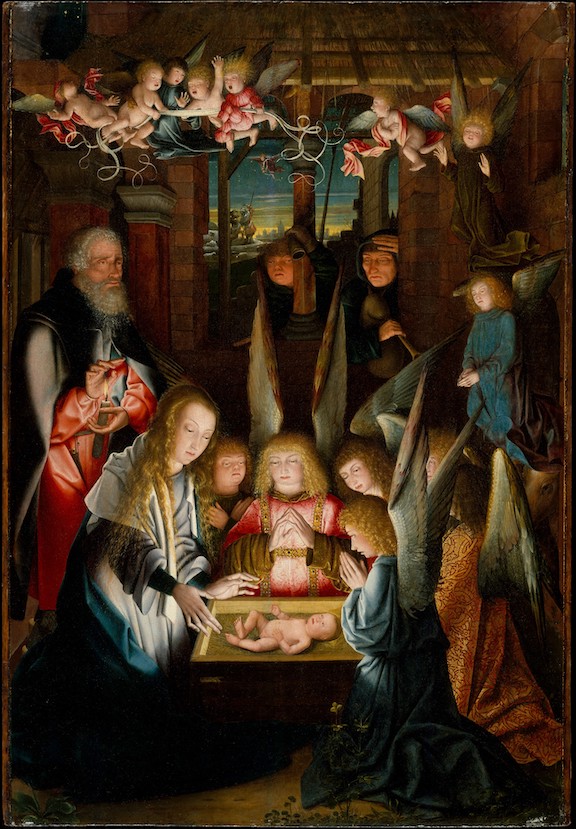H.L. Mencken, in an irreverent moment (he had a lot of them), once defined a Puritan as someone who suspected that someone else might be having a good time. The Puritans were, among other things, notoriously apprehensive about undue Christmas jollity, but Calvinist severity proved no match for rising bourgeois comfort and its attendant softening of sentiment. By the mid-nineteenth century, Christmas had already begun to morph into a secular feast, albeit one that retained the spirit of reasonably serious religious commemoration. For devout Christians, the biblical accounts of our Savior’s birth continued to hold center stage, but for most everyone else, at least in the English-speaking world, they gradually gave way to the Gospel According to Charles Dickens.
A Christmas Carol is a tale of undeniable charm that, among other things, helped to revolutionize social welfare policy in England. For all its overdone Christian-lite sentimentality, it is deep theology compared to the secular drek that now surrounds, indeed threatens to drown, what little remains of Christmas rightly understood. It’s hard to say how the present state of affairs came about. Undoubtedly, the emancipation of greed has played the dominant part over the past two centuries. As one bishop noted a few years back, perhaps the least preached-upon passage in the New Testament is that likening the entry of the rich into heaven to a camel passing through the eye of a needle.
In the United States particularly, the calculating arts of commerce have been aided and abetted by the clever sophistries of lawyers, who have converted the non-establishment clause of the First Amendment into a battering ram for non-believers. For a generation or more, the American Civil Liberties Union and its ideological allies have devoted special attention to Christmas. There’s nary a village crèche in the land these days that hasn’t been successfully assaulted by a battery of lawyers. With each passing year, more and more of what might pass for religious sentiment has been driven out of the public square.

In some cases, even the thoroughly secular image of Santa Claus has proved too much for delicate atheist sensibilities.
With notable exceptions, politicians and businessmen, who are not generally notable for piety or courage, have surrendered to the legal onslaught, often laughably so. In the 1990s, the City of Pittsburgh invented something called “Sparkle Season” to replace “Holiday Season,” which in turn had previously displaced any reference to “Season” preceded by an adjective beginning with the letter “C.” No doubt some p.r. firm earned a handsome fee from the city fathers and local businessmen for coming up with that one, but as any five-year-old could have told them, “Merry Sparkle Season” was never likely to enter the lexicon. Happily, Pittsburgh’s artificial contrivance was short-lived.
We can laugh at such feckless gestures, but over time they have taken their toll on the culture. What replaced “Sparkle Season,” I cannot say, but I’d wager that Pittsburgh’s public and commercial spaces are utterly bereft of any symbolic reference to the birth of Christ. In many places, a kind of “y’all come” accommodation has blunted the edge of threatened ACLU litigation. As one legal wag has noted, the operative rule seems to be that manger scenes on government property are o.k. as long as they are accompanied by at least three plastic reindeer. In legal terms, the cumulative effect of ACLU-type assaults against religion has prompted defenders of religious expression to shift the ground of their argument from the Free Exercise Clause of the First Amendment to the Free Speech Clause. As a practical matter, this means that religion and pornography now stand on an equal legal footing.
So it is this year that in some states, Christian-oriented displays on public grounds are (barely) tolerated, provided they are privately funded, and only on the further condition that expressions of competing religious, secular, and even anti-religious sentiment are granted more or less equal time or space. This new pattern of accommodation will undoubtedly be imitated in years ahead, so the next time you take little Johnny or Sally to the shopping mall or the state capitol, you may find a manger scene all right, but you may have trouble locating it amidst other signage and symbols celebrating Kwanzaa, the birth of Mohammed, or the virtues of atheism.
Maybe the Puritans were on to something after all. Cotton Mather’s lessons proved no match for the charms of Tiny Tim, but nowadays even Tiny Tim would have trouble finding room on the post-modernist stage. But that, too, is a very old story, is it not? It is recorded after all that Our Lord was born in a stable because there was no room for Him in the inn. God bless us one and all; even as we make merry at the end of Advent we would do well to remember that.
*Image: The Adoration of the Christ Child by a follower of Jan Joest of Kalkar, c. 1500 [The MET, New York]















